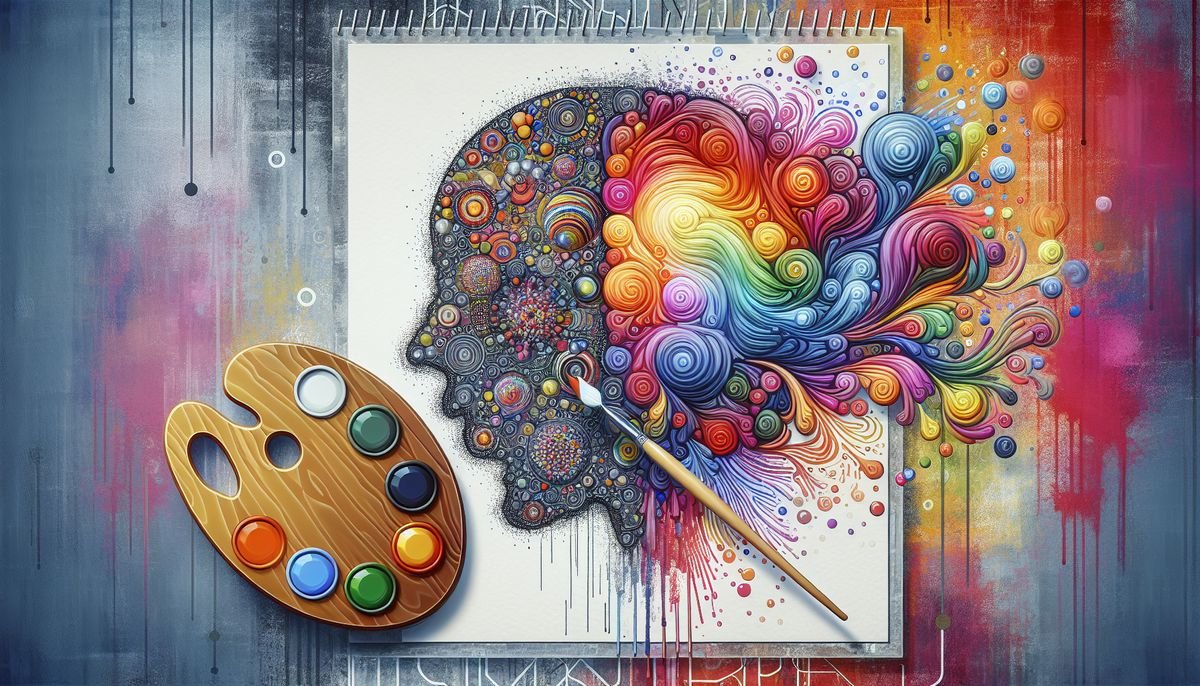In the swiftly evolving realm of artificial intelligence, DALL-E 2 emerges as a groundbreaking tool that is revolutionizing the way we create visual content. This article delves into the transformative potential of DALL-E 2 for creative ventures, offering a comprehensive exploration of its mechanics, real-world applications across various industries, and the ethical considerations it raises. Moreover, we’ll examine the business implications of AI-driven visual content, discussing new opportunities for monetization, integration into marketing strategies, and the technical hurdles entrepreneurs may face.
Key Takeaways
- DALL-E 2’s advanced capabilities are transforming the artistic landscape by enabling the creation of highly detailed images from textual descriptions, thus opening new avenues for creativity and innovation.
- The integration of DALL-E 2 into business strategies presents novel revenue streams for creatives and marketers, while also posing unique challenges in terms of ethics and technical implementation.
- Exploring case studies and the latest trends in generative AI, such as its application in the gaming industry and virtual makeup, provides valuable insights into the future of content creation and marketing.
Unleashing Creativity with DALL-E 2: Transforming the Artistic Landscape
The Mechanics of DALL-E 2: How It Works
DALL-E 2, developed by OpenAI, represents a significant leap in the realm of generative AI, particularly in the creation of visual content from textual descriptions. It operates on the cutting edge of machine learning, utilizing a transformer neural network to interpret and visualize complex ideas from simple text prompts. This process involves a series of steps that users can follow to generate images:
- Step 1: Access the DALL-E 2 web interface.
- Step 2: Input a descriptive text prompt.
- Step 3: Allow the AI to process the input and generate corresponding images.
The potential applications of DALL-E 2 span across various industries, from digital art to product design, offering a new dimension of creative freedom. As the technology continues to evolve, it is crucial to stay informed about the latest advancements and understand how to effectively leverage this tool for creative ventures.
The transformative nature of DALL-E 2 lies in its ability to materialize the abstract, turning imaginative concepts into tangible visual representations.
Case Studies: Real-World Applications in Various Industries
The advent of DALL-E 2 has opened up a plethora of opportunities across various sectors. In the health sector, generative AI applications are revolutionizing the way we approach medical treatments and diagnoses. For instance, AI is now being used to accelerate the development of lifesaving therapies, potentially reducing the time from years to mere months. This rapid advancement could soon become a staple in modern healthcare, as suggested by industry experts.
In the realm of space technology, DALL-E 2’s capabilities are being leveraged for applications such as satellite collision avoidance and Earth imaging. These innovations are not only enhancing our understanding of the cosmos but also paving the way for futuristic concepts like interstellar financial transactions.
The versatility of AI is further exemplified by IBM’s Watson and NVIDIA’s AI platforms, which have been instrumental in sectors ranging from healthcare to finance. Watson’s ability to assist in disease diagnosis and treatment recommendations, alongside NVIDIA’s AI-driven solutions for risk assessment and fraud detection, showcases the transformative impact of AI on society.
As generative AI continues to make headlines, it’s clear that the potential for DALL-E 2 to revolutionize industries is immense. Investors and businesses alike are taking note, integrating AI to improve customer service, manage supply chains, and enhance overall business operations.
Navigating the Ethical Considerations of AI-Generated Art
The advent of AI-generated art has sparked a complex debate over copyright and ownership. Who holds the copyright to AI-created content when multiple parties are involved? This question becomes even more pressing with recent legal rulings that highlight the intersection of AI technology and copyright law, affecting artists and industries alike.
Ethical production and use of AI art necessitate a conscientious approach. Here are some key considerations:
- Ensuring that AI systems are regularly audited for biases or vulnerabilities.
- Validating that original artists are credited and compensated for their work.
- Establishing clear guidelines for the ethical use of copyrighted data.
The ethical landscape of AI art is evolving, with initiatives like the International Alliance of Theatrical Stage Employees’ core principles and the Vatican’s operational roadmap signaling a movement towards responsible AI development.
As AI continues to revolutionize the creative industry, it is imperative that we navigate these ethical waters with care, balancing innovation with respect for intellectual property and societal impact.
The Business of AI-Driven Visual Content: Opportunities and Challenges
Monetizing AI Art: New Revenue Streams for Creatives
The advent of AI-driven tools like DALL-E 2 has opened up new avenues for creatives to monetize their work. By leveraging the power of artificial intelligence, artists can now generate unique artwork at scale, tapping into various innovative ways to generate income. One such method is through platforms like Medium, where guides and articles provide insights on how to capitalize on AI art.
For instance, recent articles such as ‘6 Ways to Earn Money with Midjourney AI Art Generator’ and ‘Guide to Monetizing AI Art in 2024’ offer practical advice for digital artists and entrepreneurs. These resources are becoming increasingly popular as they outline strategies to harness AI technology for financial gain.
The potential economic impact of generative AI is significant, with estimates suggesting it could add between $2.6 trillion to $4.4 trillion annually across various use cases.
Moreover, the recent $236 million investment in Runway ML underscores the growing interest and confidence in generative video AI, signaling a robust market for AI-generated content. As the industry evolves, understanding the intersection of AI and copyright law becomes crucial, especially in light of recent legal rulings that affect how artists can protect and monetize their creations.
Integrating DALL-E 2 into Marketing Strategies
The integration of DALL-E 2 into marketing strategies marks a significant shift in how brands engage with their audiences. Nestle and Unilever’s recent campaigns demonstrate the power of combining AI-driven visual content with data analytics to create personalized ad experiences. By leveraging DALL-E 2, marketers can generate unique images that resonate with individual preferences, leading to more effective and targeted campaigns.
In the realm of precision marketing, the human connection remains paramount. Kroger’s approach to creating a curated customer experience through targeted advertising is a testament to this. DALL-E 2’s role in such strategies is to enhance the creative process, allowing for the rapid production of visual assets that can be tailored to specific demographics or consumer behaviors.
To effectively integrate DALL-E 2 into marketing, it’s essential to understand the nuances of prompt writing. Here are some key points to consider:
- Familiarize Yourself with Visual Art Terminology
- Balance Creativity with Clarity
- Limit Text Rendering
- Steer Clear of Negative Prompting
- Keep prompts concise and focused
By mastering the art of DALL-E prompt writing, marketers can unlock the full potential of this technology, ensuring that the visual content not only captures attention but also conveys the intended message with precision.
Overcoming the Technical Barriers: A Guide for Entrepreneurs
In the rapidly evolving landscape of AI-driven visual content, entrepreneurs are increasingly looking to leverage tools like DALL-E 2 to gain a competitive edge. Understanding and overcoming technical barriers is crucial for success. One such barrier is the fundamental hardware infrastructure required to support AI-driven applications and data processing. To address this, entrepreneurs must consider the following steps:
- Assess current hardware capabilities and identify gaps.
- Explore partnerships with technology providers for advanced solutions.
- Invest in scalable infrastructure to accommodate growth.
Entrepreneurs should not underestimate the importance of a robust hardware foundation, as it is the bedrock upon which AI applications are built and scaled.
Additionally, a lack of awareness about the potential of immersive technologies like VR and AR can hinder adoption. It’s essential to stay informed about the latest trends and advancements in these areas to fully harness their capabilities for business success.
Conclusion
As we have explored throughout this article, DALL·E 2 represents a significant leap forward in the realm of creative ventures, offering a transformative tool for visual content creation. Its ability to generate detailed and contextually relevant images from textual descriptions has opened up new horizons for artists, designers, marketers, and content creators across various industries. From revolutionizing the gaming industry to influencing the future of TV and filmmaking, the implications of this generative AI technology are vast and far-reaching. As companies like L’Oréal and giants like Google and Nvidia continue to invest in and integrate AI into their operations, the potential for innovation in marketing, product design, and entertainment is boundless. The era of AI-driven creativity is upon us, and DALL·E 2 is at the forefront, redefining the boundaries of what’s possible and empowering creators to bring their most ambitious visions to life.
Frequently Asked Questions
What is DALL-E 2 and how is it revolutionizing visual content creation?
DALL-E 2 is an advanced AI developed by OpenAI that generates detailed images from textual descriptions. It’s revolutionizing visual content creation by enabling artists, designers, and marketers to visualize and create complex images and art pieces with simple text prompts, thereby expanding the creative process and reducing the time and effort required for visual ideation.
Can DALL-E 2 be used for commercial purposes?
Yes, DALL-E 2 can be used for commercial purposes. It offers creatives and businesses the opportunity to generate unique visual content for marketing, product design, and other creative ventures. However, it’s important to consider the ethical implications and copyright laws when using AI-generated images for commercial use.
What are the potential applications of DALL-E 2 in different industries?
DALL-E 2 has a wide range of applications across various industries. In the art world, it’s used to create new forms of digital art. Marketers use it to generate advertising material and conceptual product designs. The gaming industry can leverage it for creating game assets and concept art, while the film industry can use it for storyboarding and visual effects. Its versatility makes it a powerful tool for any sector requiring visual content.



